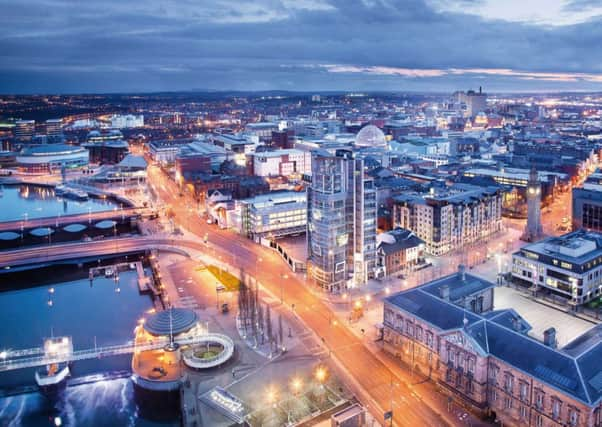Belfast rises from the ashes


Dismiss if you wish, but don’t forget Belfast’s past as an angry city caught in sectarian crossfire in the years of the Troubles, the violent conflict between Catholic and Protestant communities ceasing with the 1998 Good Friday Agreement.
These days, it’s a welcoming, friendly, lively city with major redevelopment, particularly in the inner-city and dock areas, with the latter housing the Titanic Belfast – a truly epic, silver fish-like visitor attraction by the iconic Harland & Wolff dockyard, where the ill-fated ship was built and launched in 1911.
Advertisement
Hide AdAdvertisement
Hide Ad“Welcome to Belfast”, said the taxi driver who drove me the few miles from George Best Belfast City airport to the Europa Hotel with a requested potted version of Northern Ireland’s recent history as we passed solid brick Victorian, sandstone and Portland limestone buildings in the, yes, rain.
“Here we are – the most bombed hotel in Europe” he added cheerfully.
Well, that was then, the hotel now a shining beacon of convivial modernity.
Nearby is Frank Matcham’s Grand Opera House and the MAC, the new arts centre built of Belfast brick – with theatre, music, dance, film and leading artists showcasing in three galleries.
Advertisement
Hide AdAdvertisement
Hide AdBut where Belfast really shines are the restaurants. The city is awash with quality eateries, cafés, delis and markets, including historic St George’s Market, food offerings and excellence way ahead of many British cities.
Don’t miss the Crown Liquor Saloon, The National Trust’s only pub, a Victorian treasure with its ornate wooden snug booths and stained glass windows for that Guinness or Bushmills Irish Whiskey.
But before indulging in that drink, that meal, I walked over one of the many bridges crossing the River Lagan to Titanic Belfast on the Belfast Lough, the monument to Belfast’s maritime heritage.
Fly through the attraction’s reconstructed shipyard via small gondolas to the top of Arrol Gantry to see how it was built, then walk to witness the fit-out, the sinking and the Titanic beneath the Atlantic, all relived in this remarkable, unmissable, moving, exhilarating exhibition.
Advertisement
Hide AdAdvertisement
Hide AdThe following day, I took a black taxi with Blue Badge guide Billy Scott to visit Stormont, Crumlin Gaol, Falls, Shankhill, and Newtownard Roads for Loyalist, Nationalist or IRA political murals, some 300 depicting culture and history.
Belfast’s past and present – and future – is vividly on show, not only via the Titanic but on its streets, by its delightful inhabitants, and via its many attractions.